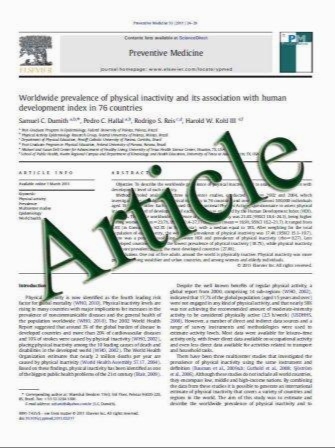Thiazolidinediones protect mouse pancreatic b-cells directly from cytokine-induced cytotoxicity through PPARc-dependent mechanisms
- نوع فایل : کتاب
- زبان : انگلیسی
- مؤلف : An-ping Wang , Xia Li , Ying Zheng , Bi-lian Liu , Gan Huang , Xiang Yan , Zhenqi Liu , Zhiguang Zhou
- چاپ و سال / کشور: 2010
Description
Since most of the current studies of thiazolidinediones (TZDs) are only focused on improving glycemic control, increasing insulin sensitivity, and regulating inflammatory states in Type 2 Diabetes, it is still controversial whether TZDs have direct, protective effects on pancreatic b-cells in autoimmune diabetes. Here, we show the protective effects of TZDs on mouse pancreatic b-cell line cells (NIT-1) impaired by exposure to inflammatory cytokines (IL-1b and IFN-c) and explore the potential mechanisms for this. The apoptosis rate and caspase-3 activity were remarkably increased, and insulin secretion response to glucose was impaired severely by exposure to IL-1b/IFN-c for 48 h compared to control cells, whereas apoptosis rate and caspase-3 activity were significantly decreased in cells with treatment of rosiglitazone (RGZ) or pioglitazone (PIG), and the capacity for insulin secretion response to glucose was recovered. TZDs protect pancreatic b-cells from cytokine-induced cytotoxicity through PPARc activation. The protective effects of the TZDs on NIT-1 cells disappeared when PPARc was blocked with PPARc-siRNA interference or treatment with GW9662, the PPARc antagonist. Additionally, the enhancement of PPARc expression by treatment with TZDs inhibited the expression of caspase 3 in IL-1b/IFN-c-induced NIT-cells. Also, the inhibition of caspase 3 expression by TZDs was blocked by co-treatment with GW9662 or infection with PPARc-siRNA. Taken together, our data suggest that TZDs might serve to protect pancreatic b-cells directly from cytokine-induced cytotoxicity through a PPARc-dependent pathway, and caspase-3 may play an important role in the mechanisms involved.
Acta Diabetol DOI 10.1007/s00592-010-0239-8 Received: 19 August 2010 / Accepted: 3 November 2010 Springer-Verlag 2010


